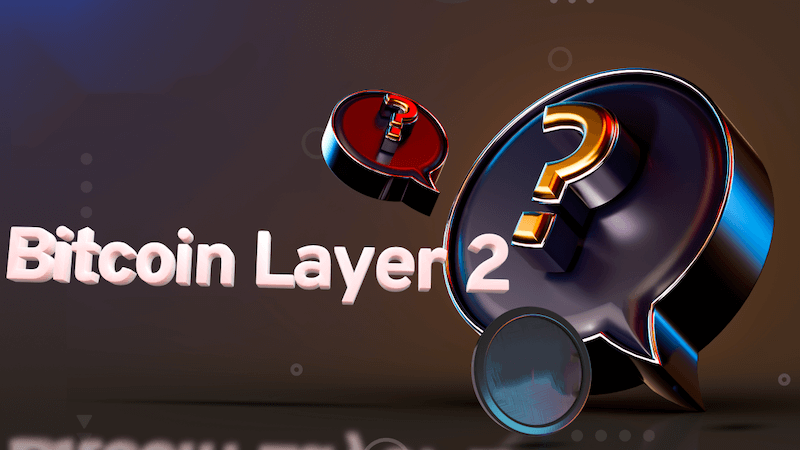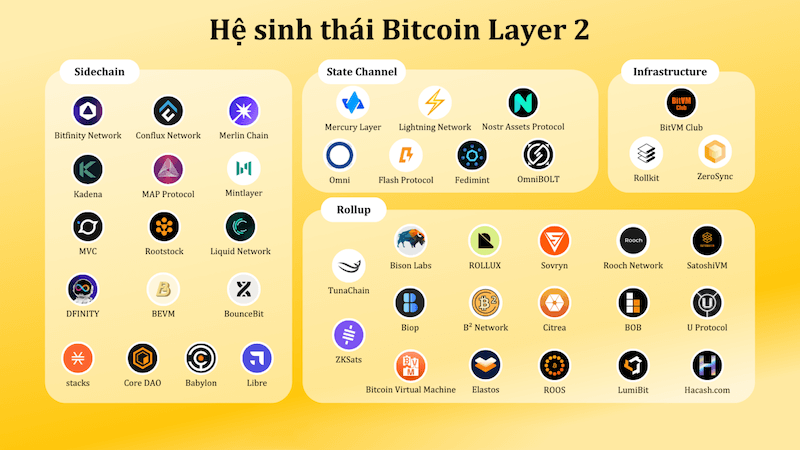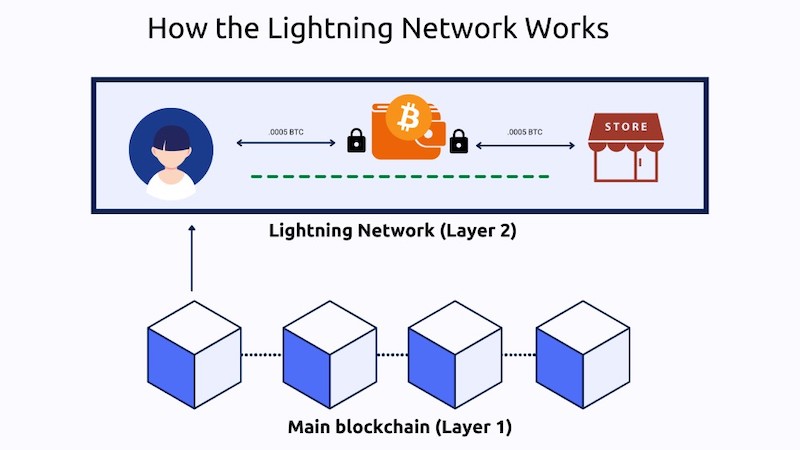What is Bitcoin Layer 2? Why does it matter? Bitcoin Layer 2 refers to secondary blockchain solutions built on top of the Bitcoin network to address the limitations of smart contracts and scalability. These solutions not only maintain Bitcoin’s security and decentralization but also enhance its functionality, similar to how Layer 2 solutions on Ethereum work. This has attracted significant interest from major investment funds and developers in the cryptocurrency space.
Why is Bitcoin Layer 2 Necessary?
Bitcoin is renowned for being the most secure and decentralized blockchain in the world. However, its network was originally designed for financial transactions, lacking support for smart contracts, decentralized finance (DeFi), non-fungible tokens (NFTs), and other decentralized applications (DApps). This limitation has restricted Bitcoin’s growth in a landscape where competitors like Ethereum thrive due to their smart contract capabilities.
The introduction of Bitcoin Layer 2 solutions has opened a new pathway, allowing the Bitcoin network to not only compete but also expand its potential.
How Does Bitcoin Layer 2 Work?
Bitcoin Layer 2 operates by utilizing various technologies to validate and agree on transactions outside of the main Bitcoin blockchain, thereby reducing the load on the main network and improving transaction speed and cost. These Layer 2 solutions inherit the security and decentralization of the main Bitcoin network, much like Rollups, Plasma, or State Channels do on Ethereum.
Types of Bitcoin Layer 2 Solutions
Bitcoin Layer 2 solutions can be categorized into two main groups based on their objectives:
Solutions Focused on Transaction Scalability
One of the biggest challenges for the Bitcoin network is scalability. As Bitcoin’s popularity has grown, its transaction speed has slowed, and fees have increased. To address this, Layer 2 solutions focused on transaction scalability have emerged, with Lightning Network being the most prominent example.
Lightning Network is a Layer 2 solution designed to increase transaction speed and reduce fees by performing transactions off the main Bitcoin blockchain. It works through a payment channel mechanism, where users can open a channel with each other and execute instant transactions, with only the final result being recorded on the blockchain when the channel is closed.
Solutions Supporting Smart Contracts
In addition to scalability, some Bitcoin Layer 2 solutions are designed to support smart contracts, enabling DApps on the Bitcoin network. Notable solutions in this category include Sidechains and Rollups.
Sidechains are independent blockchains that can interact with Bitcoin through a bridge or by using Merged Mining technology, allowing Bitcoin miners to participate in these Layer 2 networks.
Rollups on Bitcoin are being developed similarly to how they are used on Ethereum, with two main types: zkRollups and Sovereign Rollups. These solutions not only enhance scalability but also bring smart contract capabilities to the Bitcoin network.
Notable Bitcoin Layer 2 Projects
Stacks
Stacks is a prominent Bitcoin Layer 2 project designed to expand Bitcoin’s capabilities by adding smart contracts and decentralized applications (DApps). Stacks uses a Proof of Transfer (PoX) consensus mechanism, where miners participate by using Bitcoin instead of computational power. The unique feature of Stacks is that all important transactions and states are recorded on the Bitcoin blockchain, ensuring security and decentralization.
Rootstock (RSK)
Rootstock (RSK) is a Sidechain project for Bitcoin, designed to support smart contracts and DApps. RSK uses a “2-way peg” mechanism to allow Bitcoin to move between the main blockchain and RSK. It is also compatible with the Ethereum Virtual Machine (EVM), making it easier for developers to port applications from Ethereum to RSK, thus expanding Bitcoin’s functionality without compromising security.
Babylon
Babylon is a different kind of Layer 2 solution that allows users to stake BTC directly on the Bitcoin network and become Validators on the Babylon platform. Babylon also introduces the concept of Bitcoin Timestamping to enhance network security by addressing issues related to malicious Node Operators and preventing hard forks.
Challenges in Developing Bitcoin Layer 2
While Bitcoin Layer 2 offers many advantages, it also faces several challenges:
- High technical knowledge required: Layer 2 solutions are often complex and require users to have a deep understanding of technology, which can be a barrier for newcomers.
- Security risks: In systems like Lightning Network, if one party does not regularly monitor the payment channel, it can lead to security vulnerabilities.
- Centralization risk: Some Layer 2 solutions might lead to centralization, which can reduce Bitcoin’s core strength of decentralization.
- Impact of Bitcoin Core updates: Updates to the main Bitcoin blockchain can affect the operation of Layer 2 solutions, requiring high adaptability from developers.
The Future of Bitcoin Layer 2
Bitcoin Layer 2 is still in the development and testing phase, but its potential is immense. These solutions not only help Bitcoin maintain its status as the most secure and decentralized blockchain but also open up new opportunities for the growth of decentralized applications, smart contracts, and scalability on this network.
Bitcoin Layer 2 is a promising direction, enhancing and expanding the capabilities of the Bitcoin network. With the development of projects like Stacks, Rootstock, and Babylon, the future of Bitcoin Layer 2 is likely to bring significant innovations. Hopefully, this article has given you a clearer understanding of what Bitcoin Layer 2 is and its potential impact.


